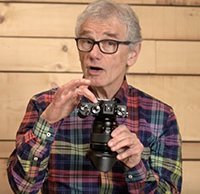Basic camera terminology, exposure settings and understanding focus
posted Saturday, March 3, 2018 at 7:00 AM EDT

Camera and tech reviewer Maarten Heilbron has been working on an ongoing video series over the last few months to help photographers understand basic camera technology. So far, his videos have been a great introduction to photography and cameras for beginners. In his first video, seen below, Heilbron looked at camera hardware terms and explained them.
His second video focused on manual settings in photography and how you can use them to dial in a correct exposure. Of course, what counts as a good exposure is also discussed below as well.
This now brings us to Maarten's latest video, which is a "focus on focus." While something like focus seems like it'd be fairly straightforward -- after all, nearly every camera includes autofocus, so how complex can it be? -- the differences in terminology and technology between manufacturers can make it a bit difficult to get a grip on focus in general.
Autofocus has two basic settings, mode and area. Mode can be thought of as dealing with "how" the camera is focusing whereas as area is the portion of the frame which is used for autofocus, the "where." For example, some autofocus area settings include nearly the entire frame whereas others include a small single point which you can move around the frame. There is also single versus continuous autofocus. In most cases, single focuses when you half-press the shutter and then you capture a shot. Continuous focus, on the other hand, focuses continuously as long as you are pressing the shutter release and capturing images.
(Via Maarten Heilbron)